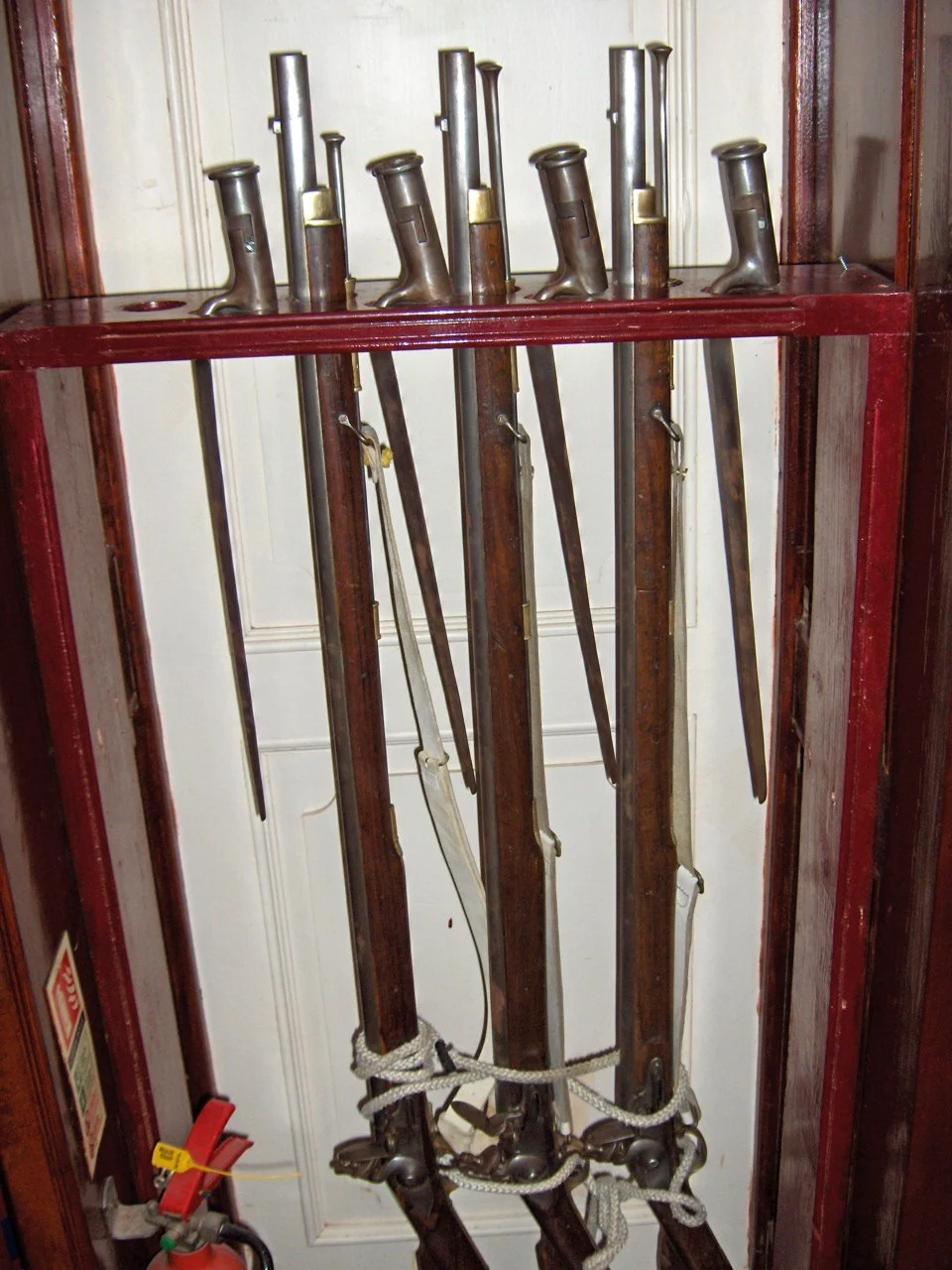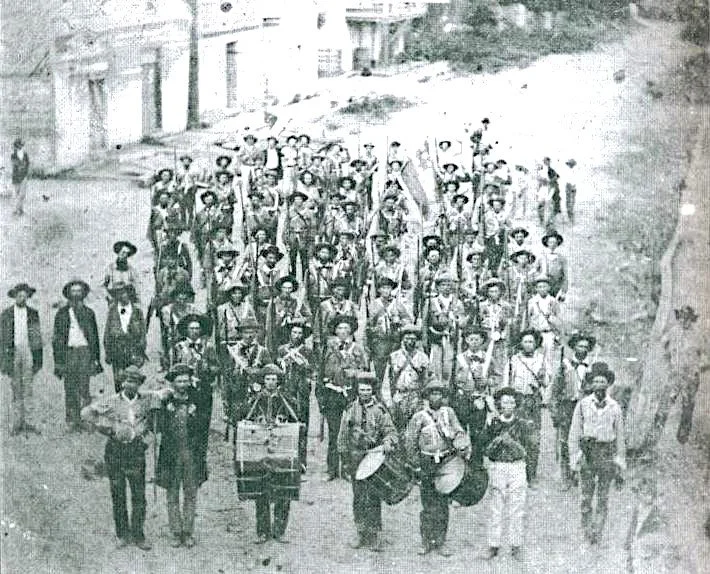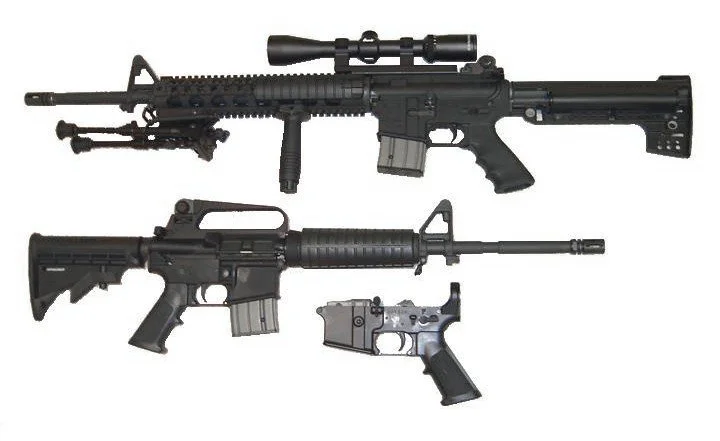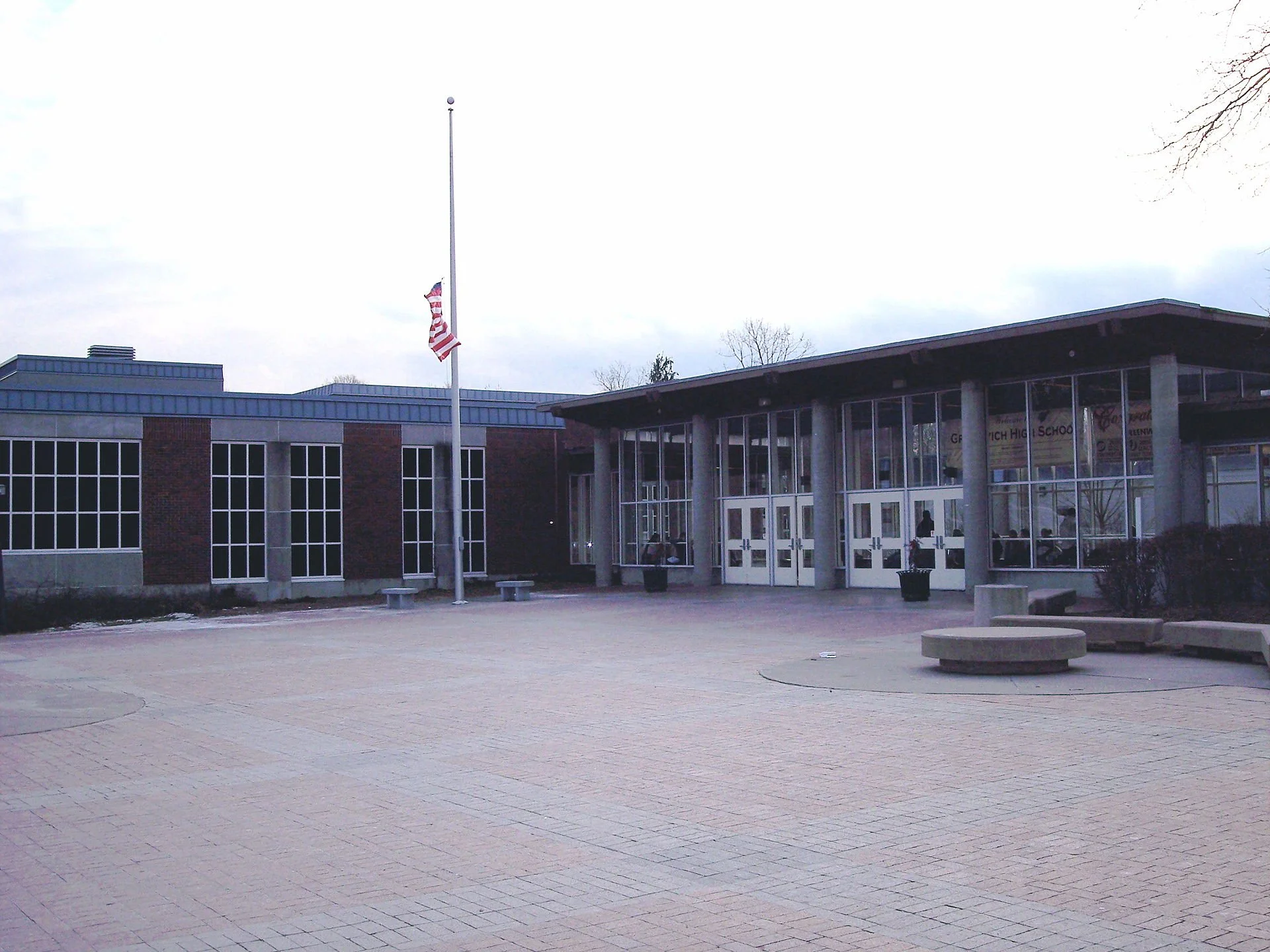
Llewellyn King: A shrug when it comes to mass murder with guns
AR-15-style assault rifle made by Southport, Conn.-based Sturm, Ruger & Co.
A Smith & Wesson AR-15-style assault rifle, designed to tear apart as many people as possible as fast as possible.
In Maryville, Tenn., where long -Springfield, Mass.-based gun maker Smith & Wesson’s is moving its headquarters. The company makes assault rifles beloved by mass murderers. That has bothered folks in Massachusetts but makes the company popular in gun-cult-dominated Tennessee and other violent Red States.
— Photo by Brian Stansberry
WEST WARWICK, R.I.
“Murder most foul,” cries the ghost of Hamlet’s father to explain his own killing in Shakespeare’s play.
We shudder in the United States when yet more children are slain by deranged shooters. Yet we are determined to keep a ready supply of AR-15-type assault rifles on hand to facilitate the crazy when the insanity seizes them.
The murder in Nashville of three nine-year-olds and three adults should have us at the barricades, yelling bloody murder. Enough! Never again!
But we have mustered a national shrug, concluding that nothing can be done.
Clearly, something can be done; something like reviving the assault rifle ban, which expired after 10 years of statistically proven success.
We are culpable. We think that our invented entitlement to own these weapons, designed for war, is a divine right, outdistancing reason, compassion, and any possible form of control.
The blame rests primarily on something in American exceptionalism that loves guns. I mostly understand that; I like them myself, as I write from time to time. I also like fast cars, small airplanes, strong drink, and other hair-raising things.
But society has said these need controls — from speed limits to flying instruction — and has severe penalties for mixing the first two with the last. Those controls make sense. We abide by them.
When it comes to that other great national indulgence, guns, society has said safety doesn’t count. So far this year, more than 10,000 people have been killed in gun violence. If that were the number of fatalities from disease, we would again be in lockdown.
We have concocted this scared right to keep and use guns. To ensure this, the Second Amendment to the U.S. Constitution has been manhandled by lawyers into being a justification for putting something deadly out of the reach of social control or even rudimentary discipline.
The latest school shooting has raised our hackles, but not our capacity to act. This national shrug at something which can be fixed is a stain on the body politic.
Most of the conservative wing of the establishment, represented by the Republican Party, has dismissed it as one might a natural disaster.
But the routine murder of innocents in school shootings is a man-made disaster. Worse, it is sanctified by a particular interpretation of the Second Amendment.
It is an interpretation which has demanded, and continues to demand, legal contortionism. This is used to justify the citizenry owning and using weapons of war.
This latest school shooting, which happened in this young year, was shocking, but what was more shocking was the political reaction.
President Biden wrung his hands and said nothing could be done without the support of Congress — thus endorsing a national fatalism.
Republican Sen. Lindsey Graham of South Carolina suggested more policemen in schools, and Rep. Thomas Massie (R.-Tenn.) said teachers needed to be armed. His children are homeschooled.
In personal life and in national life perceived impossibility is hugely debilitating.
Imagine if the Founding Fathers had said the British Empire was too strong to challenge, if FDR had said America couldn’t rise against the forces of the economic chaos of the 1930s, or if Margaret Thatcher had said British trade unions were too strong to be opposed?
These are incidents where perceived reality was, with struggle, trounced for the general good.
Guns along with drugs are the largest killer of young people. They aren’t unrelated. Unregulated guns find their way to the drug gangs of Central America, facilitating the flow of drugs.
On the Senate floor, the chamber’s longtime chaplain, retired Rear Adm. Barry C. Black, took on the pusillanimous members of his flock after the Nashville murders, quoting the 18th-century Anglo-Irish statesman Edmund Burke’s admonition, “The only thing needed for evil to triumph is for good men to do nothing.” Indubitably.
Llewellyn King is executive producer and host of White House Chronicle, on PBS. His email is llewellynking1@gmail.com and he’s based in Rhode Island and Washington, D.C.
Chris Powell: ‘These kids are so desensitized’
A 1936 poster promoting planned housing as a way to deter juvenile delinquency, showing silhouettes of a child stealing a piece of fruit and the older child involved in armed robbery.
Some muskets
The Hempstead Rifles, a volunteer militia company from Arkadelphia, Ark. in 1861, ready to fight for the Confederacy.
AR-15-style rifles
MANCHESTER, Conn.
Ancient Rome's foremost historian, Tacitus, who often sat at the center of the empire's government, observed, "The more corrupt the state, the more numerous the laws." Today he might add that the nation with ever-more laws is probably becoming not just more corrupt but more dishonest and stupid as well.
The recent mass shooting in Highland Park, Ill., may be a case in point. That state has tough and comprehensive gun-control laws and a "red flag" law -- just like Connecticut. Yet these laws didn't stop the disturbed young man charged with the crime, whose craziness was well known to his parents and the police but prompted no intervention.
In recent days in Connecticut a 15-year-old boy was shot to death and a woman wounded in Fairfield at a birthday party for a 13-year-old that was attended by dozens of people. Then two people were shot in New Haven, for which a 17-year-old was charged, and two more were shot in downtown Norwich, for which an 18-year-old was charged.
Meanwhile a Norwalk City Hall forum on gun violence, attended by Mayor Harry Rilling and U.S. Rep. Jim Himes, produced only a glimmer of understanding. The forum heard that many young men are idle, uneducated, and unskilled and that despite Connecticut's strict laws, legal and illegal guns alike are prevalent here.
Ebony Epps, of Street Safe Bridgeport, added, "These kids are so desensitized." But like everyone else Epps advocated only more "programs," which multiply almost as fast as the laws with a similar lack of effect.
There were no calls at the forum to inquire why the young men are so "desensitized," no calls to inquire into the causes of the social disintegration that is slowly destroying the country.
There was no acknowledgment that the strictest gun laws have accomplished little more in Connecticut's cities than they have in Chicago or New York.
For the country now has a huge underclass -- disengaged, demoralized, alienated and unproductive but heavily armed, and the underclass won't be giving up its guns any faster than the rest of the country will be.
Where has this underclass come from? Is it the fault of Donald Trump and George W. Bush? Why wasn't it civilized under Barack Obama and Bill Clinton? Why are fewer people today prepared to become good citizens?
Anything short of questions like those is a waste of time, except for people aspiring to careers in "programs."
xxx
Some wise guys in Connecticut, angry at the Supreme Court's recent reiteration in the Second Amendment case from New York that individuals have the right to keep and bear arms, are arguing again that the right should be restricted to members of the militia mentioned in the amendment.
Yes, "a well-regulated militia" is the rationale offered by the Second Amendment for the right to keep and bear arms. But this rationale for the right does not establish a requirement. Back when the Bill of Rights was adopted, people didn't have to be formal members of a militia to be eligible to join it or be summoned into it. The Bill of Rights gave the people the right to keep and bear arms just in case.
That is how the Second Amendment was construed back then. People today may consider the amendment's rationale outdated, but it's still in the Constitution and it's not for the courts or state legislatures to change or invalidate it. That can be done only by repealing the amendment through the prescribed constitutional procedures.
The wise guys complain that today's semi-automatic rifles are "weapons of war," far more deadly than the muskets in use when the Bill of Rights was adopted. The wise guys argue that the country's Founders didn't imagine that the right to keep and bear arms included "weapons of war." But of course the Founders imagined it, since back then muskets were "weapons of war" too.
Connecticut's own Constitution suggests that the Supreme Court has construed the Second Amendment exactly as it was understood when it was ratified in 1791. For since 1818, 27 years after ratification of the Second Amendment, Connecticut's Constitution has declared: "Every citizen has a right to bear arms in defense of himself and the state."
It always was and remains an individual right.
Chris Powell is a columnist for the Journal Inquirer in Manchester.
John O. Harney: Marketing abortion ruling; armed youth; ‘don’t say gay’ in Greenwich; not the ‘Flutie Effect’
Map by Tpwissaa
Greenwich, Conn., High School
From The New England Journal of Higher Education, a service of The New England Board of Higher Education (nebhe.org)
BOSTON
Could the anti-choice, forced-birth culture of the U.S. Supreme Court and many U.S. states present an advantage for New England economic boosters?
Massachusetts Gov. Charlie Baker told reporters that he had heard from a lot of companies that the recent Supreme Court decision removing the federal protection of the right to abortion may offer a big opportunity for Massachusetts to attract some employers whose employees would want access to reproductive-health services. Connecticut Gov. Ned Lamont called on businesses in states that limit abortion access to consider relocating to Connecticut.
In the context of choosing where to start or expand a business, big employers have occasionally written off New England as “old and cold” compared with economically and meteorologically sunnier spots. However, a 1999 poll by the University of Connecticut’s Center for Survey Research and Analysis, while admittedly dated, found an interesting niche for New England. International site-selection consultants, accustomed to Europe’s pricey, regulated environments, were less concerned with New England’s notoriously high costs than domestic site-selection pros. Key issues for the international consultants were access to higher education, an educated workforce and good infrastructure.
Peter Denious, chief executive of Advance CT, a business-development organization, recently told the Connecticut Mirror that such issues as diversity, equity and inclusion—and the state’s commitment to clean energy—could all help Connecticut align with the corporate goals of certain companies.
Our culture of active government, unionization and especially our human- resource development, could bode well once again in relatively enlightened New England.
Anti-semitism rising: The Anti-Defamation League (ADL) reported 2,717 anti-semitic incidents of assault, harassment and vandalism in 2021 in the U.S., the highest number since the ADL began tracking anti-semitic incidents in 1979, according to the group’s annual Audit of Antisemitic Incidents. These included more than 180 anti-semitic incidents in New England. And nationally, 155 anti-semitic incidents were reported at more than 100 college campuses. Meanwhile, tension between anti-semitism and anti-zionism, including the boycott, divestment and sanctions (BDS) movement, is challenging on campuses and beyond
Packing heat. More than 1 million U.S. adolescents (ages 12 to 17) said they had carried a handgun in 2019-20, up 41% from about 865,000 in 2002-03, according to a study by researchers at Boston College’s Lynch School of Education and Human Development, using data from the National Survey on Drug Use & Health. The socio-demographic profile of the gun carriers also changed. Carrying rates grew from 3.1% to 5.3% among white adolescents, from 2.6% to 5.1% among higher-income adolescents, and from 4.3% to 6.9% among rural adolescents between, while rates among Black, American Indian/Alaskan Native and lower-income adolescents decreased.
“Don’t Say Gay” here? In April, Mount Holyoke College President Sonya Stephens wrote here that Florida legislation dubbed by opponents the “Don’t Say Gay” bill, was part of a nationwide wave of proposal laws linking divisive issues of race, sexual orientation and gender identity to parents’ concerns about what their children are being taught in public schools. These bills not only undermine the real progress that LGBTQ+ people have made in society over the past 50 years, Stephens wrote, but they also further erode trust in some of our most under-compensated public servants: school teachers and administrators.
On July 1, U.S. Secretary of Education Miguel Cardona noted that the Florida parents and families he’d spoken with said the legislation doesn’t represent them and that it put students in danger of bullying and worse mental health outcomes.
In Cardona’s home state of Connecticut, meanwhile, the Greenwich School Board adopted a new Title IX policy unanimously, but not without controversy. Edson Rivas and Colin Hosten of the Fairfield County-based Triangle Community Center Board of Directors wrote in Connecticut Viewpoints that the policy adopted by the Greenwich School Board “conspicuously removes any language referring to gender identity and sexual orientation” which was part of the original version of the policy introduced last fall. The board replied that “this policy covers all students, whether or not certain language is included.” But Rivas and Hosten aren’t buying it. “If the substance of the policy remains the same, as they say, then the only effect of removing the language about gender identity and sexual orientation is the linguistic pseudo-erasure of the LGBTQ+ community in Greenwich Public Schools.”
Truth to tell: Recently, the American Association of Colleges and Universities (AAC&U) named 75 higher-education institutions to participate in the 2022 Institute on Truth, Racial Healing & Transformation (TRHT) Campus Centers as part of an effort to dismantle racial hierarchies.
As we at NEBHE and others have wrestled with a “reckoning” on race, gender and so many other wrongs, the “truth and reconciliation” concept has always made sense to me. Check out, for example, the thoughtful book Honest Patriots exploring how true patriots in post-World War II Germany, post-apartheid South Africa and the U.S. in the the aftermath of slavery and the genocide of Native Americans loved their country enough to acknowledge and repent for its misdeeds.
Under the AAC&U initiative, campus teams develop action plans to advance the parts of the TRHT framework: narrative change, racial healing and relationship building, separation, law and economy. The institute helps campus teams to prepare to facilitate racial-healing activities on their campus and in their communities; examine current realities of race relations in their communities and the local history that has led to them; identify evidence-based strategies that support their vision of what their communities will look, feel and be like when the belief in the hierarchy of human value no longer exists, and learn to pinpoint critical levers for change and to engage key stakeholders.
Among participating New England institutions: Landmark College, Middlesex Community College, Mount Holyoke College, Suffolk University, the University of Connecticut and Westfield State University.
Another problem with over-incarceration. NEBHE has published a policy brief about the effects of higher education on incarcerated people in New England prisons and jails—and increasingly broached conversations about the dilemmas created by the world’s biggest incarcerator — America. Now, another byproduct surfaces: Children with an incarcerated parent have exceedingly low levels of education. The most common education level for respondents from a low-income family who had an incarcerated parent was elementary school, according to research by a group of Wake Forest University students who put together an article for the Nation Fund for Independent Journalism. The students set out to understand how the academic achievement, mental health and future income of children of incarcerated parents compare to those with deceased parents. Just under 60% as many respondents with an incarcerated parent completed a university education compared to the baseline of respondents with neither an incarcerated nor deceased parent.
Acquisition of Maguire: I first heard the term “Flutie Effect” in the context of former Boston College Admissions Director Jack Maguire. The term refers to the admissions deluge after the BC quarterback Doug Flutie threw the famed Hail Mary pass (caught by the less-famous Gerald Phelan) in 1984. Flutie won the Heisman Trophy, then pursued a pro career, first with Donald Trump’s New Jersey Generals in the USFL and then in the Canadian Football League, with a few bumpy stops in the NFL.
But Maguire attributed BC’s good fortune not to the diminutive quarterback but to the college’s “investments in residence halls, academic facilities, and financial aid.” In 1983, Maguire, a theoretical physicist by training, founded Maguire Associates and introduced the concept of “enrollment management,” combining sophisticated analytical techniques, customized research and deep experience in education leadership with a genuine enthusiasm for client partnerships. Maguire became a sort of admissions guru whose insights we have been pleased to feature.
Now, higher-education marketing and enrollment strategy firm Carnegie has announced it is buying Maguire Associates. Not to be confused with the foundation that administered the Carnegie Classification of Institutions of Higher Education, which recently moved to the American Council on Education, nor the Carnegie Endowment for International Peace, which has encouraged disarmament, this Carnegie, also founded in the 1980s and based in Westford, Mass., is formally known as Carnegie Dartlet LLC. Its pitch: “We are right definers. We are your intelligence. We are truth revealers. We are your clarity. We are obstacle breakers. We are your partners. We are audience shapers. We are your connection. We are brand illuminators. We are your insight. We are story forgers. We are your voice. We are connection creators. …”
John O. Harney is executive editor of The New England Journal of Higher Education.
Chris Powell: More realism needed in debating how to curb mass shootings in our crazy country
AK-47 Type 3A with ribbed stamped-steel magazine
Protesting President Trump's massacre condolence tour when it reached Dayton last week, a man held a sign reading, "You are why." But as objectionable as the president's demeanor often is, the protester's sign was just politically partisan wishful thinking.
For while the mass murderer in El Paso appears to have hated the illegal immigrants often disparaged by the president, the one in Dayton appears to have been a leftist, a supporter of Antifa and Democratic presidential candidate Bernie Sanders, as was the crazy who shot up the Republican congressional baseball team's practice in Arlington, Va., two years ago
On the weekend of the El Paso and Dayton massacres there were 50 shootings in Chicago, a city long under Democratic management in a heavily Democratic state. A few days ago two people were shot together in Hartford, and nearly every day produces shootings not just in Hartford but also in Bridgeport and New Haven, where there are hardly any Republicans. Shootings are now the way of life in Democratic urban America, and politicizing those shootings would impugn the president's most strident critics.
Good if the latest massacres induce Congress to pass legislation increasing background checks for gun purchases. But most purchases -- those made through licensed dealers -- already require background checks. The exceptions are guns sold privately, and these are seldom used in mass shootings. Indeed, most guns used in mass shootings have been obtained legally after background checks, and there does not seem to be anything in the records of the perpetrators in El Paso and Dayton that would have disqualified them from their guns. Most crazies are not criminals before their mass murders
Good also if Congress passes "red flag" legislation, establishing procedures for challenging a gun owner's fitness -- provided, of course, the procedures include sufficient due process. But a "red flag" law can work only if a gun owner advertises his guns, and few gun owners bent on mayhem are likely to do that.
Maybe large-capacity ammunition magazines should be prohibited, but empty magazines are easily replaced in two or three seconds
That leaves outlawing "assault weapons." But how are those to be defined other than by their ability to fire a series of bullets with repeated trigger pulls but without immediate reloading? Except for barrel size there is little difference in technology between "assault weapons" and ordinary handguns
For nearly all modern guns except shotguns are "semi-automatic." Fully automatic guns, guns that spray bullets by a single pull and hold of the trigger, are the only real military guns and their possession is already highly restricted. Few are in civilian hands.
Semi-automatic has been the norm with civilian guns since Connecticut's Sam Colt perfected the revolver almost two centuries ago.
As a practical matter an "assault weapon" is just any rifle that scares somebody.
So nearly all modern guns in civilian possession can be called "assault weapons," and if semi-automatic guns are to be outlawed, nearly all guns in civilian possession will be illegal. That would require more than tinkering with the Second Amendment. It would require repeal and confiscation.
The country is in a tough spot. It is full of both crazies and guns and the issue is far more difficult than its partisans let on. Whatever should be done, it will have to start with more clarity and honesty than the debate has provided so far.
Chris Powell is a columnist for the Journal Inquirer, in Manchester, Conn.












